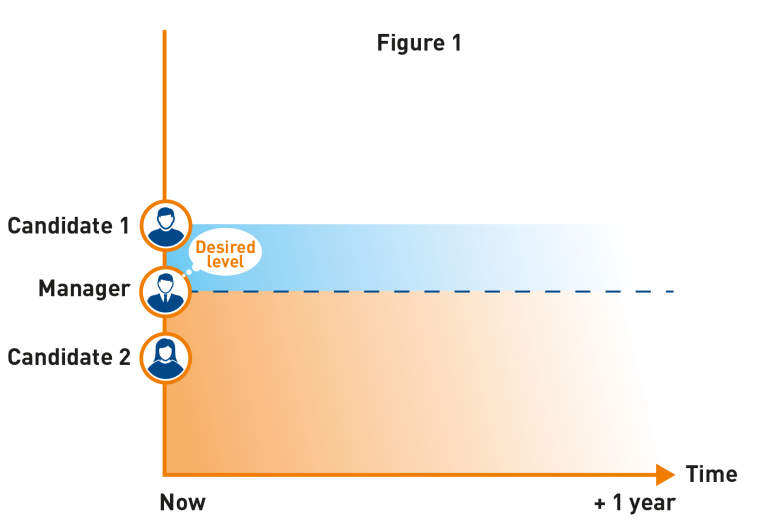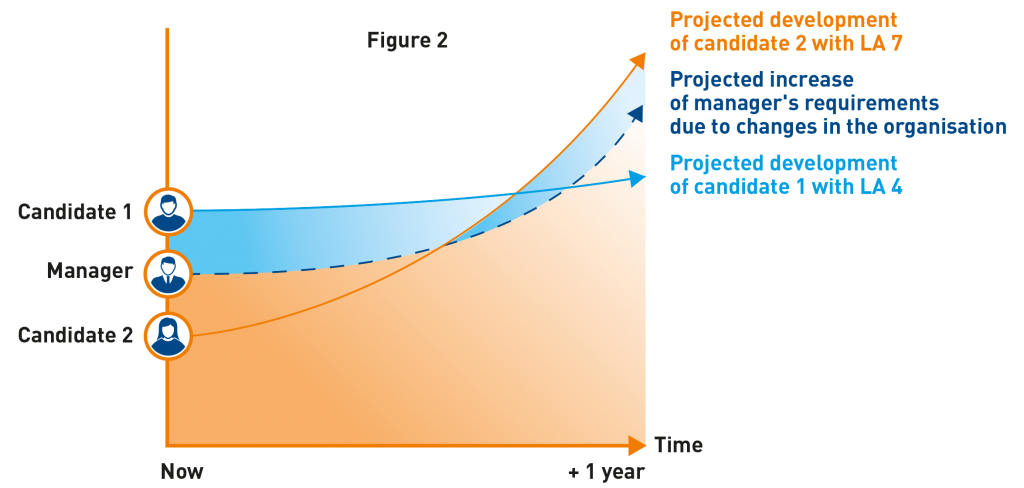
Recruitment dilemma
Recruitment dilemma
An organisation’s success is as good as the total of the success of its employees. Correct. That a clear strategy is needed when recruiting staff that fit the mission and vision of the organisation has long been accepted. However what if there are vacancies to be filled and it is hard to find people that meet these strategic requirements and choices of the organisation? What if the line manager is in a real hurry and says he is looking for people to do the work NOW. As (internal) recruiter how do you approach this?
Will the choices now be good enough in the future too?
The interests of the individual (line) manager do not always correspond to the interests of the organisation as a whole. The manager has set targets and work that has to be performed now. The board does not want the organisation to employ only people who can do the work now, but looks further into the (often even less certain & changeable) future. The board wants to see people being recruited who have the know-how and skills to continue to strengthen the organisation’s competitive position in the future too. This needs strategy and clear choices. In a (tougher) labour market this certainly creates a dilemma for recruitment.
An example
Organisation X has a clear vision on talent management: to continue to be innovative and progressive now, and in the future, recruitment has been instructed that the qualities of all potential employees first have to be assessed through online assessments. In addition, each new employee has to have three key qualities that fit with the values and (future) vision of the organisation.
Line manager Y urgently needs people for a project that has been delayed due to long-term sickness and maternity leave. Fortunately he has found someone via via who can help him with the project. A friend of his has told him about is a good fellow who is eager to help out. He knows that this of course has to go through recruitment. Recruitment gets the candidate to do an online assessment. The candidate does not meet the basic requirements established by the board and has an average score on a competency profile for the job. The manager is not too concerned about this. He is confident that this candidate will be very useful. All that messing about with basic requirements! Why does it matter if the candidate doesn’t fit with the organisation’s future, he needs someone now and quickly.
Recruitment in a dilemma
Logically the proposed candidate should not be appointed. After all that is the agreement. However line manager Y is also an internal customer who wants a short term solution. How can you reconcile these two apparently contradictory situations?
The first thought is that you have to be consequent, policy is policy, so don’t make the appointment. This is not helpful for manager Y. After all he has a job to do with too few people. Another possible solution is a temporary (project) contract. In this way the manager quickly has a helping hand for the project. However this is not a structural solution for the organisation’s future. After all, strategic personnel planning is a spearhead for keeping and strengthening the competitive position in the future. Temporary contracts and a larger flexible team create other problems, including less engaged employees & loss of know-how. You could also say that you can make an exception just this once. Go ahead and make the appointment, manager Y is happy and the problem is solved easily and quickly. But how will this new employee fit in the organisation in two years’ time? What is the most sensible choice?
Measuring Learning Agility
Another approach and an additional option is to assess the learning agility of the new employee. Learning Agility is the ability to use new experiences to develop new effective behaviours quickly and flexibly and then to successfully adopt this behaviour in practice as well. Today’s performance is certainly no guarantee for future performance in an environment where all sorts of technological and economic changes make the structure of the work increasingly diffuse. Those who learn more quickly, experiment more and are able to quickly make complex connections, will be able to make the difference for the organisation in changing situations or roles.
Practical effect: high versus low Learning Agility
Suppose: line manager Y communicates what he wants and what a candidate should be able to do in an existing role (in figure 1 referred to as desired level). Two candidates are tested for this job (see score levels in figure 1).

Candidate 1 has the qualities required now and has a slightly lower Learning Agility score (4.0). Candidate 2 scores slightly lower on the competencies expected of him now and has a high Learning Agility score (7.0). At first sight, the choice seems to be obvious. Candidate 1 scores better than candidate 2, so candidate 1 is the best candidate. But here too: current performance does not guarantee performance in the future, because organisation X is changing quickly and the chance that different requirements will be set in different jobs and roles in the (near) future is high. After all, the future is not static. So the manager’s desire will not remain constant (dotted line figure 1), but will change over time.

Figure 2 shows how the desire and accompanying package of requirements of the manager changes over time (middle line). Candidate 1 has a low Learning Agility score. It will cost him more effort to meet this new package of requirements and develop quickly. Of course he will learn, but more slowly than candidate 2, who has a high Learning Agility score. In diagram 2, you see that there is a sudden tipping point, at which point candidate 2 is a better candidate for the future of the organisation: learns quickly and flexible in a changing environment.
Learning Agility as a tool for the dilemma?
Using the above (obviously a bit exaggerated) figures recruitment can clearly explain to manager Y why he would be better off selecting candidate 2. Candidate 1 is a suitable short-term solution. In the long term candidate 2 will be much more useful to him, even in subsequent projects that might require different qualities and skills from the candidate. And in the long(er) term too, candidate 2 fits in the future of the organisation: flexible employees for a flexible organisation.